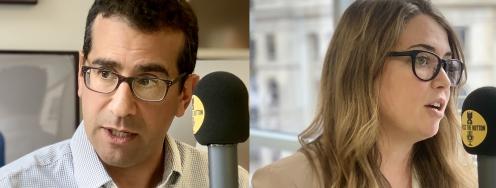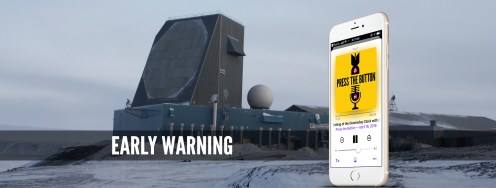China Leans on Iran, Urges Return to Nuclear Talks
June 15, 2011
Featured Image
Today's top nuclear policy stories, with excerpts in bullet form.
Stories we're following today: Wednesday, June 15, 2011.
China Pushes Iran to Return to Talks - Reuters [link]
- China's President Hu Jintao told [Iranian President Mahmoud Ahmadinejad] on Tuesday that six-nation talks were the best way to guarantee Iran's right of peaceful use of nuclear energy.
- Last week China joined Western powers in telling Iran its "consistent failure" to comply with United Nations resolutions "deepened concerns" about possible military dimensions to its nuclear programme.
- China has also placed more onus on Western powers to expand negotiations with Tehran.
Woolsey Misstates the Intelligence in Missile Defense Pitch - Greg Thielmann in Arms Control Now [link]
- Woolsey and Heinrichs [in their recent Foreign Policy article] transmogrify an expression of great uncertainty to its opposite by stating: “…the intelligence community continues to estimate that Iran will have an ICBM by 2015.”
- A congressionally-mandated assessment the Pentagon issued in April 2010 was triple-hedged: “With sufficient foreign assistance [1], Iran could [2] probably [3] develop and test an intercontinental ballistic missile capable of reaching the United States by 2015.” Mr. Woolsey presumably knows that such weasel-worded constructions leave careful readers far from any conclusion that an Iranian ICBM is likely by 2015.
- [Woolsey] has consequently set aside this inconvenient truth in trying to make his case against the administration’s missile defense policies.
Terror Strikes Hint at Pakistani Nuke Security Gaps: Expert - Global Security Newswire [link]
- “A frontal assault on nuclear weapons storage facilities, which are the most robustly defended elements of Pakistan’s nuclear weapons cycle, is no longer an implausible event,” [said Shaun Gregory].
- “As the number of nuclear weapons facilities grows, and the number of those with access to nuclear weapons or related components rises, the complex challenge of assuring the security of nuclear weapons and nuclear weapons components will become ever more difficult.”
- Gregory said up to 70,000 individuals in Pakistan are familiar with or directly involved in manufacturing, holding, sustaining or fielding the country's nuclear weapons. “Some may be willing to collude in various ways with terrorists,” he wrote in his analysis, "Terrorist Tactics in Pakistan Threaten Nuclear Weapons Safety."
Coming to a Missile Silo Near You: The End of the Strategic Triad - Thomas P. M. Barnett in Battleland [link]
- As the Pentagon's "efficiencies review" unfolds, one Cold War mainstay of the US military posture is inevitably going to be retired - namely, the land-based portion of the strategic missile triad.
- This way, the Navy's "boomers" (costliest leg of the stool) and USAF's strategic bombers feel that much more secure - budget-wise - in the battles to come.
Myanmar nukes? Defector's tale stokes suspicions - Matthew Pennington in Associated Press
- Defector Sai Thein Win's account of his three years working in two clandestine factories … has deepened suspicions that Myanmar's xenophobic military leaders hanker for an atomic deterrent.
- Experts have been divided on whether Sai Thein Win's account, including hundreds of photos of factory sites and manufactured components, amounts to proof that Myanmar was seeking nuclear weapons technology.
- Robert Kelley, a former IAEA director and nuclear weapons inspector … is confident it does, although engineering drawings were unprofessional and the manufactured items appeared crude.
- David Albright, an analyst at the Institute for Science and International Security…also questioned the credibility of information from defectors who could have a political ax to grind against Myanmar's rulers.
The Loose Nukes Cable that Shook Washington - David Hoffman in “World of Threats” [link]
- When the Soviet Union collapsed two decades ago, it left behind hundreds of tons of highly-enriched uranium and plutonium spread across 11 time zones. Some was protected by no more than a wax seal and string, and the system for keeping track of it was a pile of paper receipts.
- Without a serious method for keeping track of the nuclear materials, it would be hard to detect if some was stolen or diverted.
- Any new approach [to nuclear security] would require more money than the near-bankrupt Russian state could afford, perhaps billions of dollars...That’s where Nunn-Lugar came in. The program began with $400 million annually...DOE nonproliferation programs alone are now over $2 billion.
- There are still problems...But imagine what kind of world we would face if Nunn and Lugar had not stepped up to the plate?



